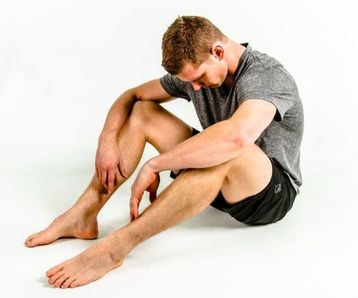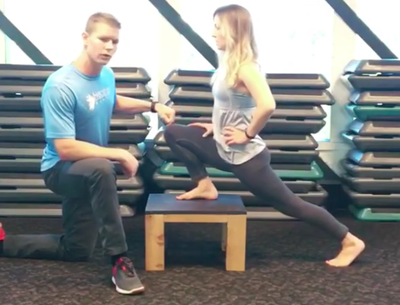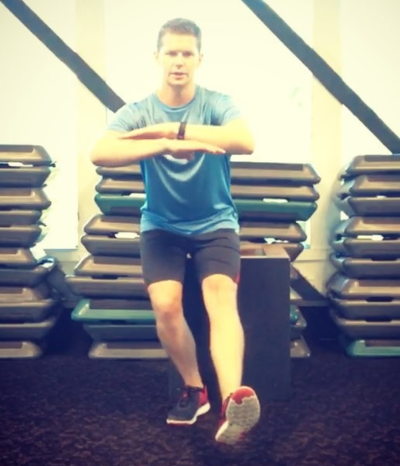Have you ever been to a physical therapist, doctor, trainer, or anyone who evaluates your body or monitors how you move? If so, they have may told you that you have poor posture.Poor posture! Yikes!! That sounds dooming. When we talk about poor posture, words like rotator cuff tear, disc herniation, trauma, injury, and more all come to mind. Scary stuff! In our society, we seem to be fixated on our posture. In our obsession, we blame posture for many of our problems. What if I told you that there is no such thing as poor posture? It is time to buckle up. Sit in an upright or slouched position, and continue reading! "Poor posture is not the problem! A lack of movement is the underlying issue." |
| Standing Calf Stretch Description: Place the injured foot behind the uninjured foot and keep the back knee straight, with the heel firmly planted on the floor. Lean forward against a wall so that you feel a stretch in the calf furthest from the wall. Hold each stretch for 1 minute. Repeat 3x. | Heel Raises Description: Stand with your feet a few inches apart, with your hands lightly resting on a counter or chair in front of you. Slowly raise your heels off the floor while keeping your knees straight. Hold for about 3 seconds, then slowly lower your heels to the floor. Repeat 2 sets x 30 repetitions. | Towel Scrunches Description: Begin with your foot flat on the floor. Using your toes scrunch the towel towards you. Scrunch the towel as far as possible, then straighten and repeat. Repeat 3 sets x 15 repetitions. |
Assuming you are healing properly, these exercises will be quickly progressed to more advanced balance and strengthening exercises. Below are 4 examples of more advanced strengthening that is essential in the later stages of rehabilitation.
How Do You Prevent Ankle Sprains in the Future?
Once your symptoms have decreased it is important that you take the necessary steps to prevent the injury from returning. Below are several tips for preventing ankle sprains.
1) Strengthen the muscles of the foot and ankle
2) Focus on balance and coordination exercises
3) Strengthen the hips and spine
4) Change environmental factors (shoe type, body weight, walking surface)
1) Strengthen the muscles of the foot and ankle
2) Focus on balance and coordination exercises
3) Strengthen the hips and spine
4) Change environmental factors (shoe type, body weight, walking surface)
Heafner Health
Physical Therapy
Manual Therapy
Movement Specialists
Pain Management
Archives
April 2024
February 2024
January 2024
June 2023
April 2022
October 2019
February 2019
September 2018
August 2018
July 2018
June 2018
May 2018
March 2018
February 2018
January 2018
December 2017
November 2017
September 2017
August 2017
July 2017
June 2017
May 2017
April 2017
March 2017
January 2017
September 2016
August 2016
July 2016
June 2016
May 2016
April 2016
March 2016
February 2016
















 RSS Feed
RSS Feed
